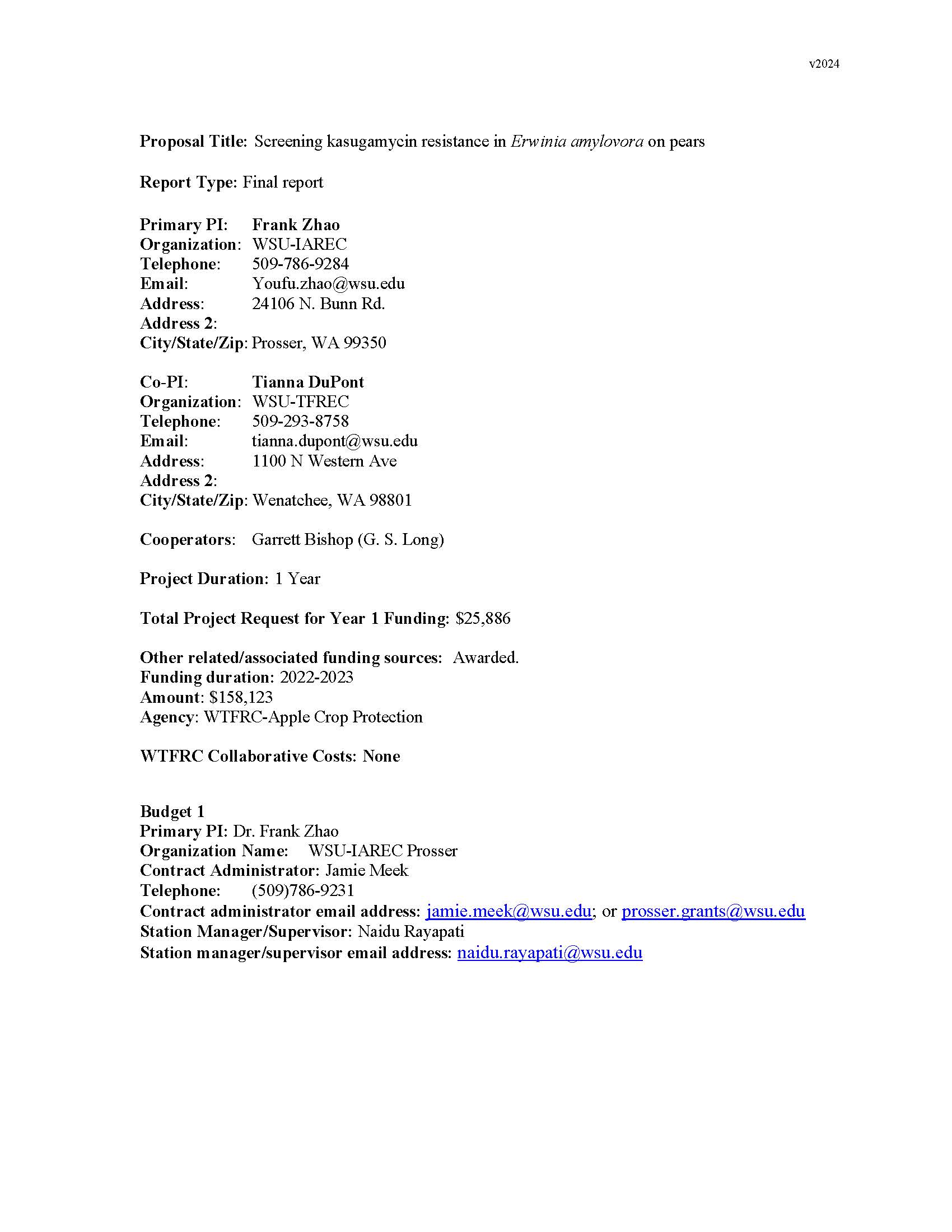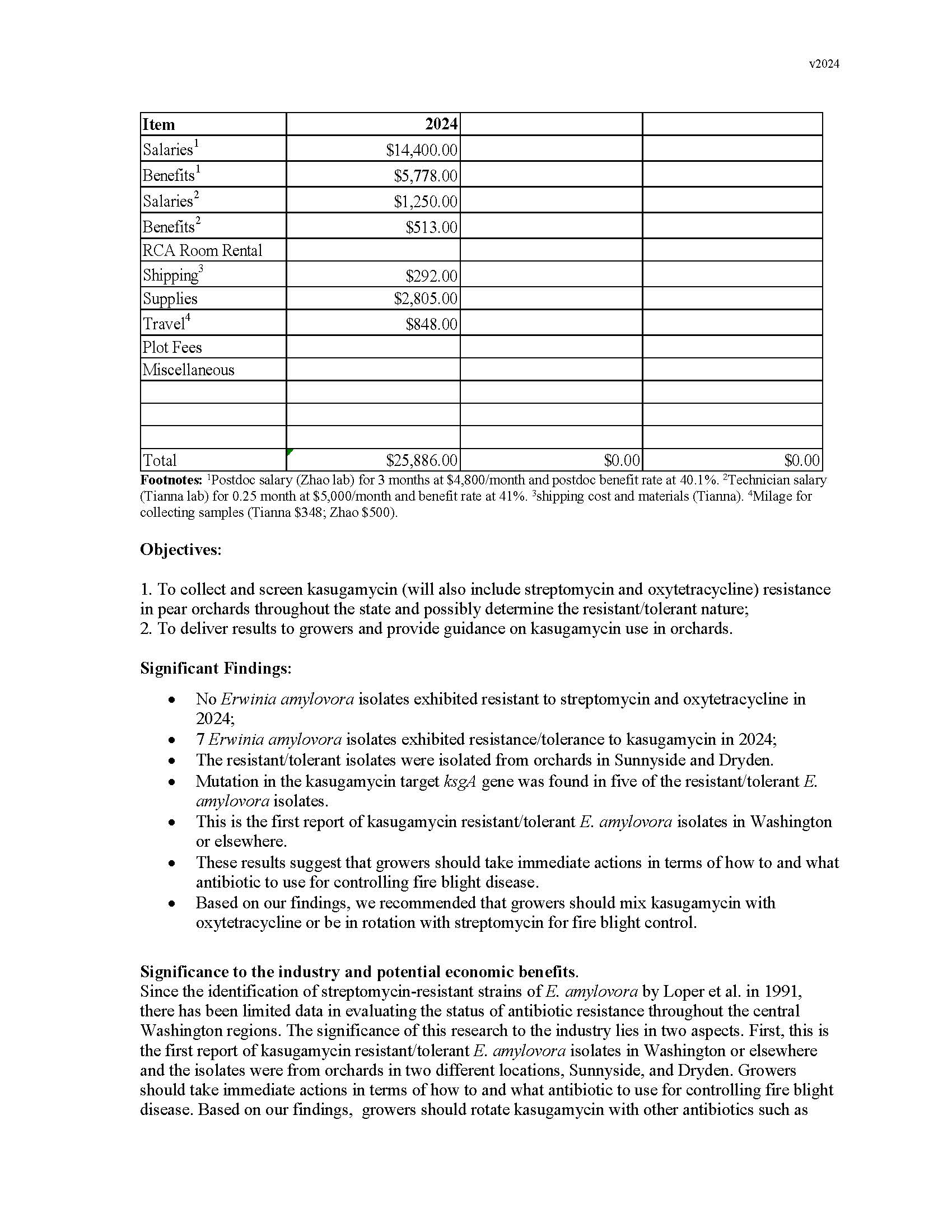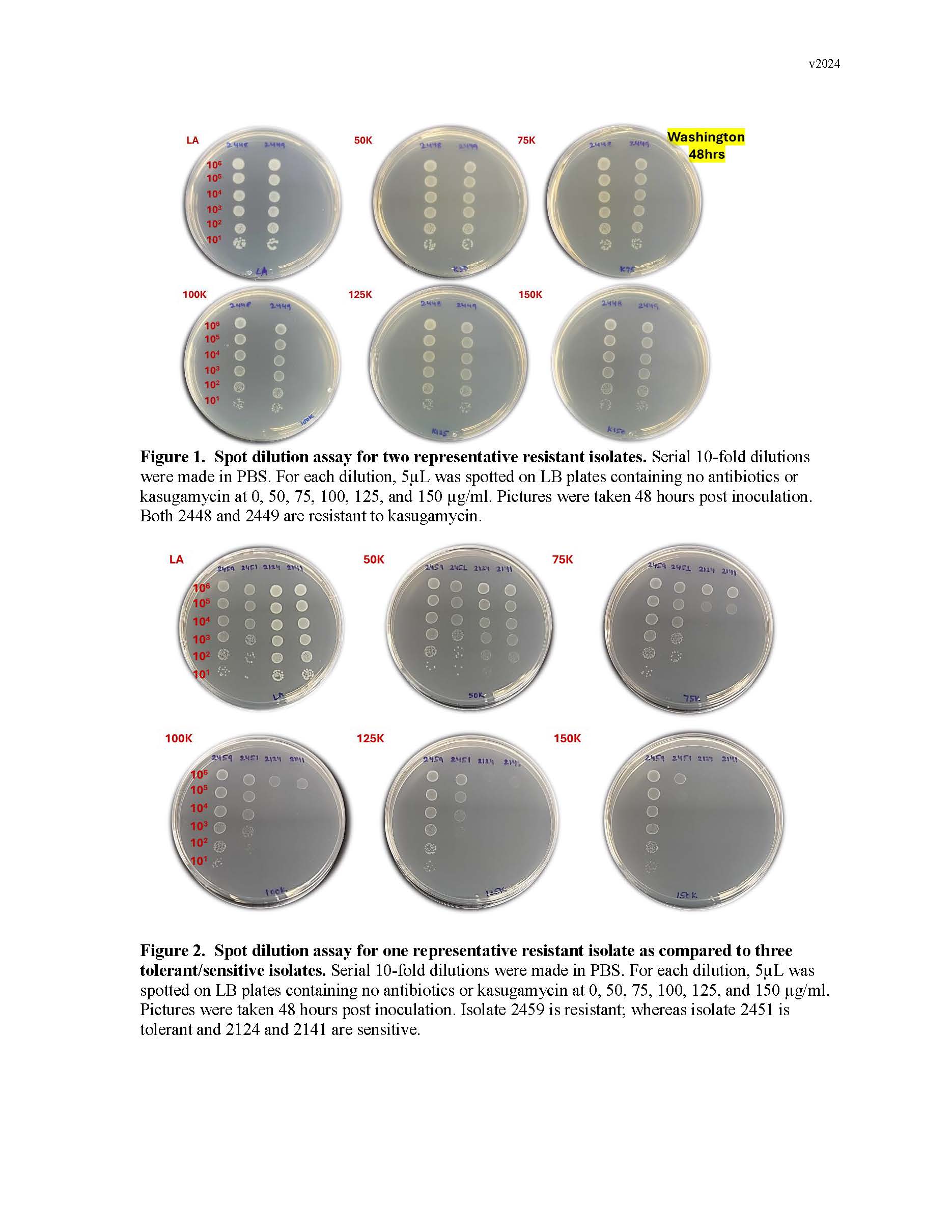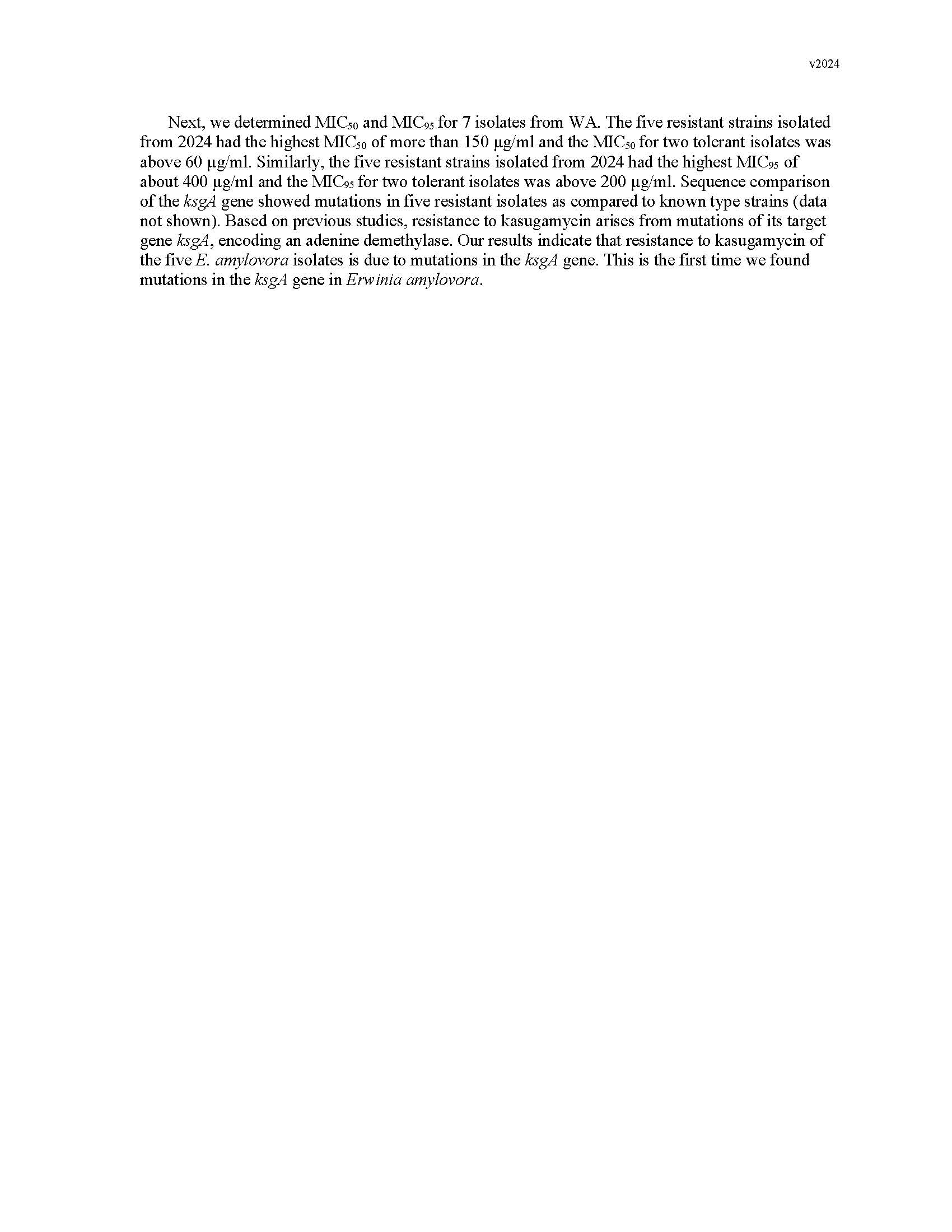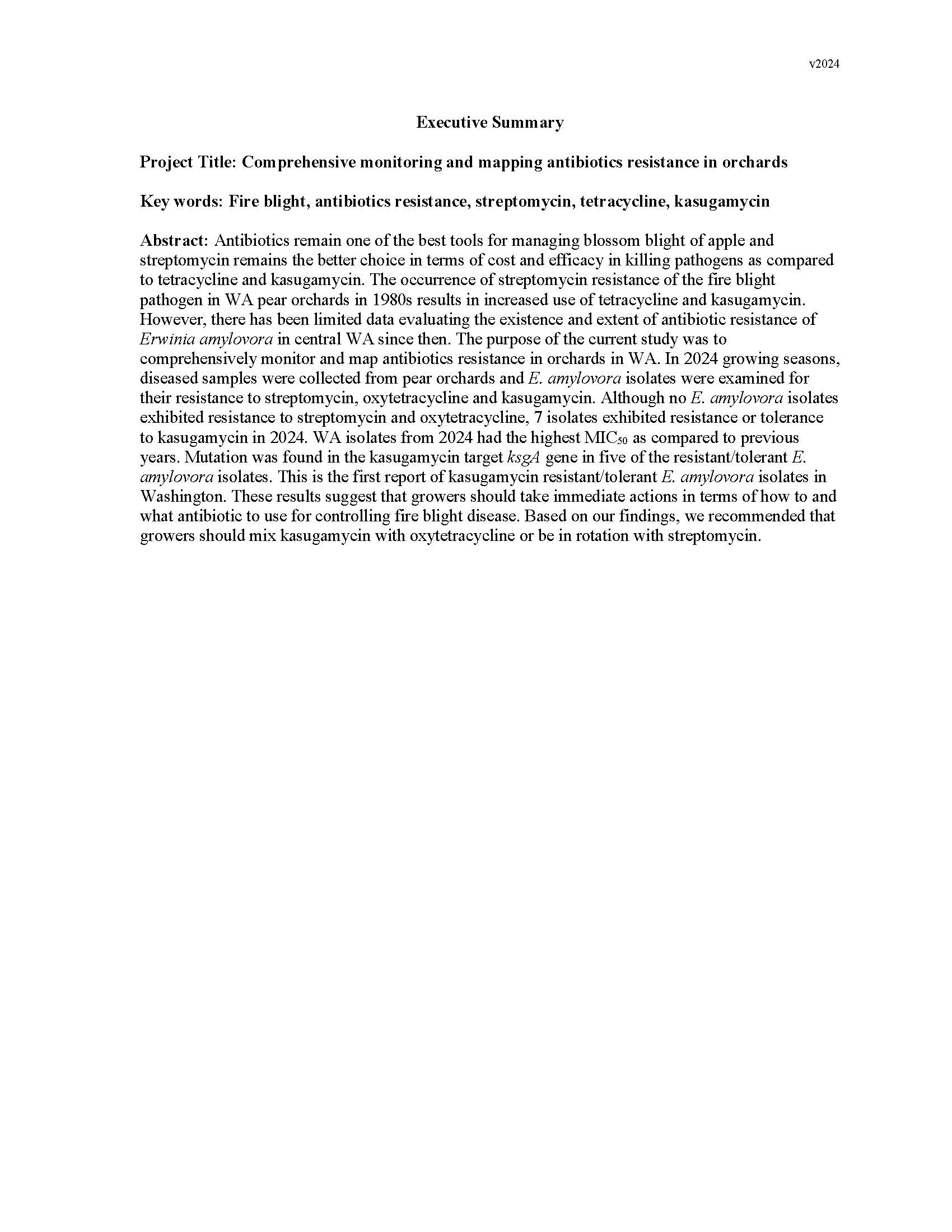Screening kasugamycin resistance in Erwinia amylovora on pears
Author: Frank Zhao
Published: 2025
Summary: Antibiotics remain one of the best tools for managing blossom blight of apple and streptomycin remains the better choice in terms of cost and efficacy in killing pathogens as compared to tetracycline and kasugamycin. The occurrence of streptomycin resistance of the fire blight pathogen in WA pear orchards in 1980s results in increased use of tetracycline and kasugamycin. However, there has been limited data evaluating the existence and extent of antibiotic resistance of Erwinia amylovora in central WA since then. The purpose of the current study was to comprehensively monitor and map antibiotics resistance in orchards in WA. In 2024 growing seasons, diseased samples were collected from pear orchards and E. amylovora isolates were examined for their resistance to streptomycin, oxytetracycline and kasugamycin. Although no E. amylovora isolates exhibited resistance to streptomycin and oxytetracycline, 7 isolates exhibited resistance or tolerance to kasugamycin in 2024. WA isolates from 2024 had the highest MIC50 as compared to previous years. Mutation was found in the kasugamycin target ksgA gene in five of the resistant/tolerant E. amylovora isolates. This is the first report of kasugamycin resistant/tolerant E. amylovora isolates in Washington. These results suggest that growers should take immediate actions in terms of how to and what antibiotic to use for controlling fire blight disease. Based on our findings, we recommended that growers should mix kasugamycin with oxytetracycline or be in rotation with streptomycin.
Keywords:

